1.1 Basic Drone Rules
In this page, we’ll introduce some of the basic drone rules. Basically, the rules for operating a drone can be boiled down to “Do not do anything unsafe” - but sometimes they have to be spelled out.
1.1.1 Drone Operating Rules
- No flying farther than you can clearly see the drone
- You must be able to see the drone at all times
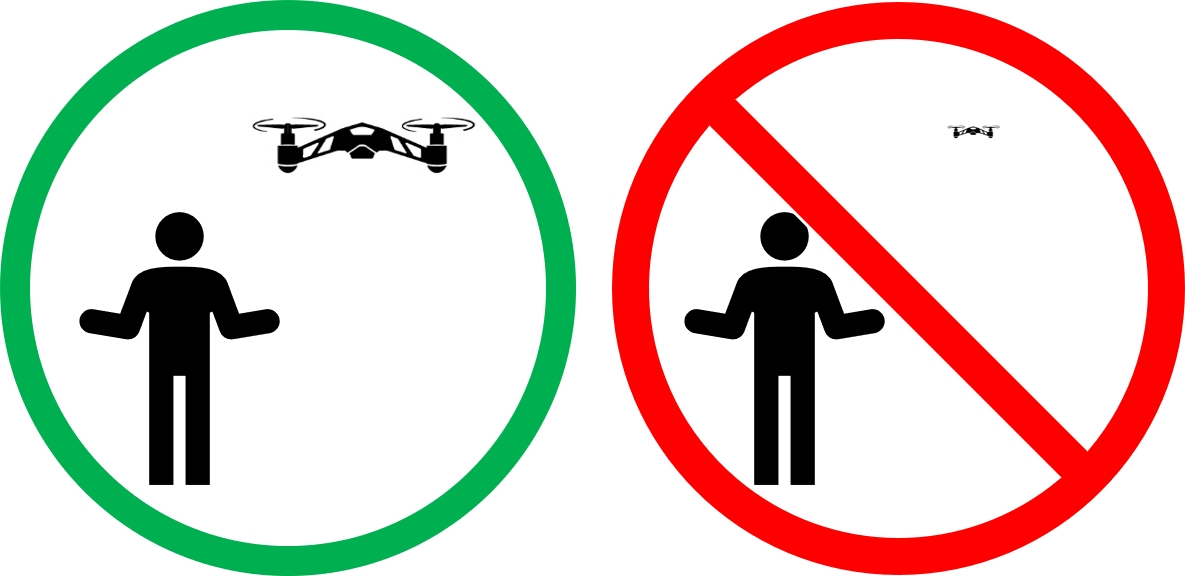
Figure 1.1: Visual Line of Sight
- No flying above non-participants or moving cars
- No flying higher than 400 ft above the ground
- No reckless or careless flying that endangers the life or property of another
- No flying when the horizon visibility drops below 3 miles
- This includes smog, fog, or haze
- No flying within 2000 ft laterally or 500 ft vertically of any cloud
- Including fog and low cloud layers on overcast days
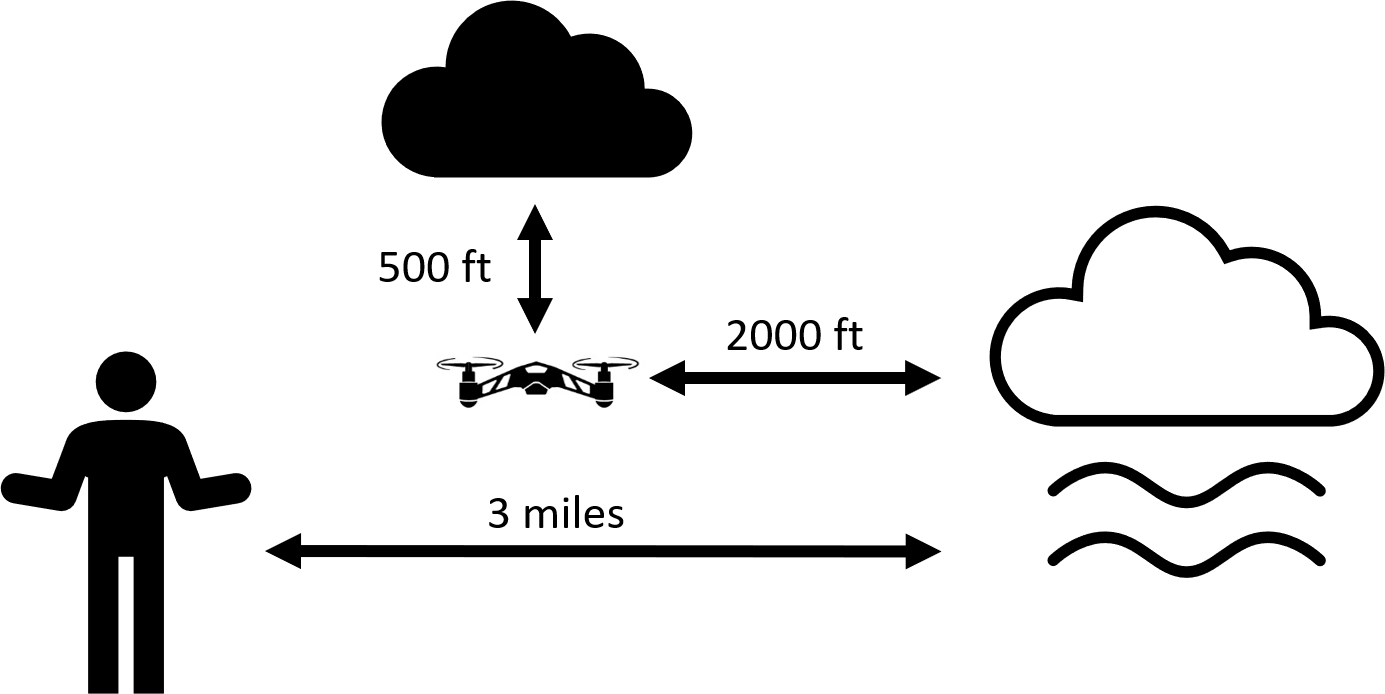
Figure 1.2: Minimum Distances from Clouds, Fog or Haze
- No flying faster than 100 mph
- No flying at night (unless you follow additional requirements)
- No operating a drone from a moving vehicle
1.1.2 Airspace Rules
- The drone must always get out of the way and always stay well-clear of all manned aviation traffic, including airplanes, helicopters, gliders, paragliders, hot air balloons and parachutes.
- Even if “you were there first”
- Permission is required to fly in any controlled airspace (Class B, C, D, and surface Class E)
- Controlled airspace is typically found within 5 miles of most airports for commercial travel and large general aviation airports (non-commercial travel) - See Figure 1.3
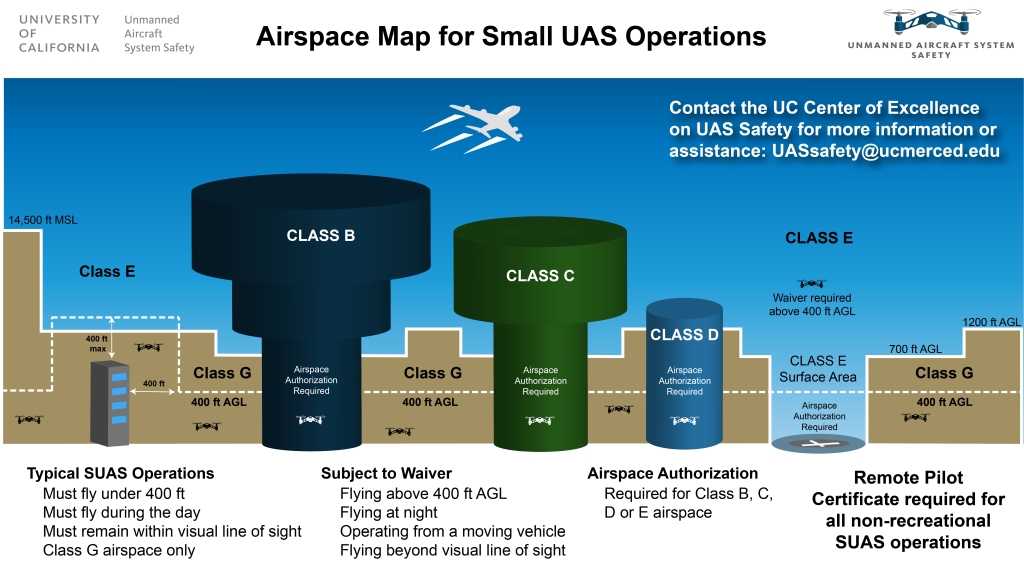
Figure 1.3: Small UAS Airspace Rules
- No interfering with aviation traffic patterns at any airport, heliport, or seaplane base
- Traffic patterns include more than just the immediate take off and landing - it also includes the downwind and base legs (See Figure 1.4)
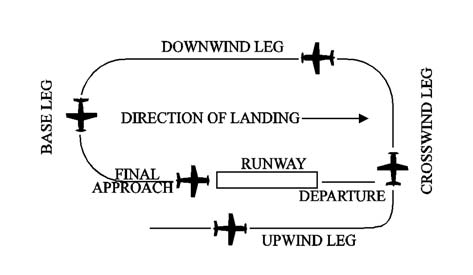
Figure 1.4: Typical Airport Traffic Patterns (FAA Aeronautical Information Manual)
1.1.3 Operator Rules
- There must always be a Remote Pilot in Command (RPIC)
- The RPIC is the one in charge of the flight operations and is ultimately responsible for all safety and operations
- The RPIC doesn’t always have to be the one manipulating the flight controls of the drone - it could be the RPIC is letting a student learn to fly under his/her direct supervision.
- The RPIC may only operate (supervise) one drone at a time
- The RPIC must have an FAA Drone License (or be exempt*)
- More Info Here: FAA Drone License
- The RPIC must be at least 16 years of age, and must be able to speak, write and understand English.
- No restriction on nationality but a license does require Federal documentation such as a Passport.
- No one may operate a drone or act as any direct participant in the operation of a drone if he or she knows, or has reason to know, that he or she has a physical or mental condition that would interfere with the safe operation of the drone.
- No one may operate a drone or act as any direct participant in the operation of a drone under the influence of alcohol or any drug that may inhibit decision making
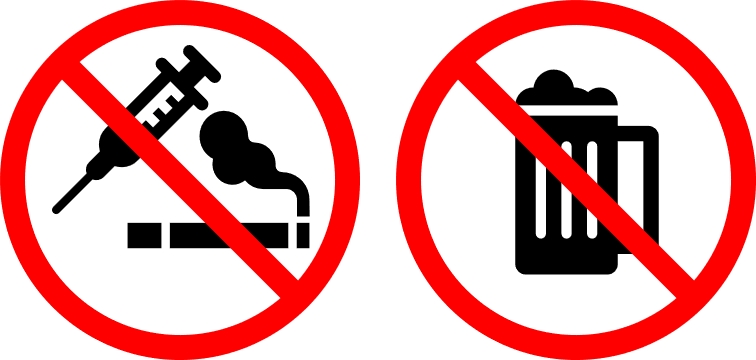
Figure 1.5: No drugs, alcohol or altered mind-states allowed during flight operations
1.1.4 Drone Rules
- All drones that weigh more than 0.55 lbs (250 grams) must be registered with the FAA
- Only use the FAA DroneZone website for registration (More Info here: Register your Drone)

Figure 1.6: FAA DroneZone
- Drones must weigh less than 55 lbs
- Drones that weigh more than 55 lbs require rare special FAA authorization
- Drones may not drop or release hazardous material
- Drones that drop biological or chemical agents for Agriculture require additional Federal and State authorizations
- While not illegal, please do not drop glitter or confetti from a drone
- Any payload that is attached to the drone must be securely attached and may not adversely affect the controllability of the drone
- Weapons are not allowed to be attached or used on drones
- Tethered drones are not exempt from drone regulations
The topic of drone regulations can be very nuanced and complex. We’ve shortened it to the basics in this section, but there may be scenarios or situations that may be exempt or have additional restrictions. Always feel free to reach out to us at UASsafety@ucmerced.edu for a one-on-one consultation.